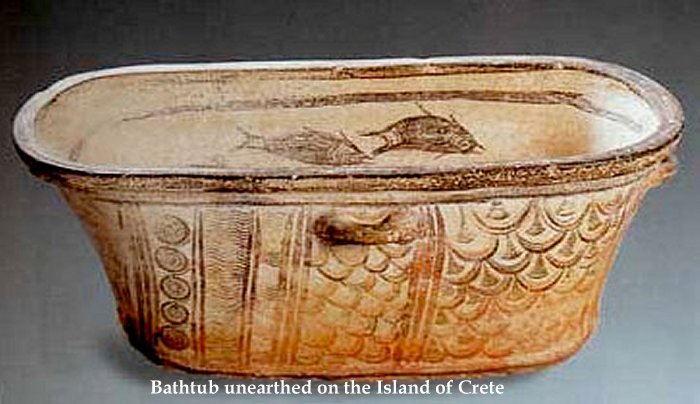Was Hygiene Important For Our Ancestors?
A. Sutherland - AncientPages.com - How important was hygiene in ancient times and expectations about keeping oneself clean?
Although the term "hygiene" came into use at the beginning of the nineteenth century, an instinctive desire to preserve or restore purity is very old.
Written sources, iconography and a variety of artifacts demonstrated a significant role of hygiene and each epoch had its ‘own way’ of understanding of dirt and cleanliness.
Ancient societies put a great deal of importance on bathing. In ancient times, it was generally believed that hygiene was the most effective means to fight disease. Antiquity was the cleanest epoch in human history.
The ancient Egyptians, for example, rightly assumed that high temperatures and considerable humidity of the Nile River could result in the development of diseases.
According to the Ebers Papyrus, a medical document dated to about 1500 BC, the ancient Egyptians bathed regularly and mixed vegetable and animal oils with alkaline salts were used to form a soap-like material. These ancient people daily used a lot of makeup cosmetics such as cream, pastes and face masks. Daily bathing helped to remove both makeup and other impurities. Cleanliness was also dictated by religious considerations.
The designs of entire cities in the Harappan culture included centralized baths and running water and in the Indus valley, archaeologists have discovered the first toilet 4,500 years.
The Hindus tradition of bathing and its benefits was known 3,000 years ago.
The Ancient Greeks adopted the idea of bathing from the Hindus, who were familiar with the benefits of bathing as early as 3,000 years ago. Baths were initially not so much a way of daily care of the body, but rather a kind of ritual.

Ancient tapestry depicting a heavily romanticized courtly bath in the early 1500s, set in a woodland glade, surrounded by various delights such as food, music, sweet smells. Image credits: Cluny Museum
Greek homes, even those not wealthy ones, were equipped in ceramic tiled baths. Baths - connected with a variety of beauty treatments and numerous utensils for bathing purposes - purified and strengthened the body.
Archaeological findings confirm that the first known to us, bathtub comes from the palace of Knossos on Crete - 1700 BC an the earliest known flushing toilet, which was screened off by partitions and was flushed by water kept in cisterns or by rain water.
The Romans had large public baths and incredibly popular thermal baths. The Finns popularized the sauna, which was also used by the Koreans (“hanjeungso”), the Karo people of Indonesia (oukop), and the so-called “Turkish Bath” was used throughout the Middle East.
Medieval Europeans bathed less frequently than their Norse forerunners, who bathed at least once a week. However, to say that medieval faces, hands, and bodies were always dirty, their clothes were evil-smelling and everything around them was dirty, would be to condemn all medieval people. It would be unfair to do so.
If you had the money, you could pay for servants to heat water and fill a wooden tub for one,
but most people used the public baths. Based on ancient sources, by the thirteenth-century there were thirty-two bathhouses in Paris and eighteen in London; even the smaller towns had bathhouses.
The Medieval Europeans have always valued a nice smelling plant, but oils, soap, colognes and perfume. The art of perfume and other wonderful smells such as rosewater originated from the Holy Lands and was brought to Europe by the crusaders.
Maino De Maineri (also known as Magninus Mediolanensis, who died in 1368, was a 14th-century Italian physician, astrologer and writer, described more 57 bathing prescriptions and gave his own rules to use in specific conditions, such as traveling, pregnancy and old age.
Before the Middle Ages, public baths were much more common and still, during the 4th and 5th centuries, Christian authorities allowed people to bathe for cleanliness and health. However, the Church condemned attendance to public bath houses for pleasure and condemned women going to bath houses that had mixed facilities.
Over time, more and more restrictions appeared for Christians, who were prohibited from bathing naked. Eventually, public bathing was considered immoral activity that led to diseases and prostitution.
Written by – A. Sutherland AncientPages.com Staff Writer
Copyright © AncientPages.com All rights reserved. This material may not be published, broadcast, rewritten or redistributed in whole or part without the express written permission of AncientPages.com
Expand for referencesReferences:
T. Scully, The Art of Cookery in the Middle Ages
S. Cavallo,T. Storey, Healthy Living in Late Renaissance Italy
More From Ancient Pages
-
 ‘Arcade’ Of Ancient Mancala Game Boards Carved On Rocks Found In Lewa Wildlife Conservancy, Kenya
Archaeology | Feb 2, 2024
‘Arcade’ Of Ancient Mancala Game Boards Carved On Rocks Found In Lewa Wildlife Conservancy, Kenya
Archaeology | Feb 2, 2024 -
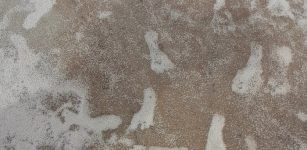 Oldest Fossil Human Footprints In North America Confirmed
Archaeology | Oct 6, 2023
Oldest Fossil Human Footprints In North America Confirmed
Archaeology | Oct 6, 2023 -
 Merovingian Dynasty Of Long Haired Kings
Featured Stories | Jan 18, 2019
Merovingian Dynasty Of Long Haired Kings
Featured Stories | Jan 18, 2019 -
 Mystery Of The Knights Templar – Did A Secret Ancient Meeting Determine The Real Purpose Of The Christian Knights? Part 1
Ancient Mysteries | Aug 20, 2019
Mystery Of The Knights Templar – Did A Secret Ancient Meeting Determine The Real Purpose Of The Christian Knights? Part 1
Ancient Mysteries | Aug 20, 2019 -
 Study: Paleo-Americans Hunted Mastodons, Mammoths And Other Megafauna In Eastern North America 13,000 Years Ago
Archaeology | Jun 15, 2023
Study: Paleo-Americans Hunted Mastodons, Mammoths And Other Megafauna In Eastern North America 13,000 Years Ago
Archaeology | Jun 15, 2023 -
 Ancient Romans Used The Poisonous Black Henbane Plant As Hallucinogenic Medicine
Archaeology | Feb 9, 2024
Ancient Romans Used The Poisonous Black Henbane Plant As Hallucinogenic Medicine
Archaeology | Feb 9, 2024 -
 Notre Dame Is On Fire! Can The Magnificent Cathedral Still Be Saved?
News | Apr 15, 2019
Notre Dame Is On Fire! Can The Magnificent Cathedral Still Be Saved?
News | Apr 15, 2019 -
 America’s Oldest Tombstone: Jamestown’s Black “Marble” Knight’s Tombstone Was Imported From Belgium
Archaeology | Sep 27, 2024
America’s Oldest Tombstone: Jamestown’s Black “Marble” Knight’s Tombstone Was Imported From Belgium
Archaeology | Sep 27, 2024 -
 Ancient Syriac Epitaphs Discovered In Tomb Of Priest Monoha Shed New Light On The Assyrian Empire
Archaeology | Dec 23, 2019
Ancient Syriac Epitaphs Discovered In Tomb Of Priest Monoha Shed New Light On The Assyrian Empire
Archaeology | Dec 23, 2019 -
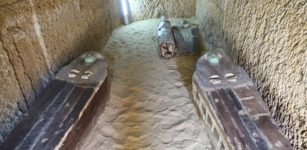 Pyramid-Builders’ Cemetery With Coffins Discovered Near Giza, Egypt
Archaeology | May 6, 2019
Pyramid-Builders’ Cemetery With Coffins Discovered Near Giza, Egypt
Archaeology | May 6, 2019 -
 Shining Swords: Magical Artifacts That Symbolized Power, War, Punishment And Righteousness
Featured Stories | Nov 20, 2024
Shining Swords: Magical Artifacts That Symbolized Power, War, Punishment And Righteousness
Featured Stories | Nov 20, 2024 -
 On This Day In History: Moscow Armistice Signed Between Finland And Soviet Union – On Sep 19, 1944
News | Sep 19, 2016
On This Day In History: Moscow Armistice Signed Between Finland And Soviet Union – On Sep 19, 1944
News | Sep 19, 2016 -
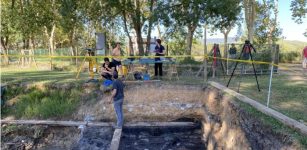 Well-Preserved 7,300-Year-Old Wooden Cabins Discovered In La Draga
Archaeology | Oct 23, 2023
Well-Preserved 7,300-Year-Old Wooden Cabins Discovered In La Draga
Archaeology | Oct 23, 2023 -
 Huge Lost Ancient Underground City Of Samen Finally Reveals Its Secrets
Archaeology | Apr 28, 2017
Huge Lost Ancient Underground City Of Samen Finally Reveals Its Secrets
Archaeology | Apr 28, 2017 -
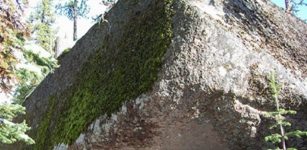 Ancient Unsolved Mysteries Of Siberia – A Place Full Of Secrets
Featured Stories | May 19, 2014
Ancient Unsolved Mysteries Of Siberia – A Place Full Of Secrets
Featured Stories | May 19, 2014 -
 History Of Jarlshof – Thousands Of Years Of History With Traces Of Picts, Vikings And Scots
Featured Stories | Jun 4, 2020
History Of Jarlshof – Thousands Of Years Of History With Traces Of Picts, Vikings And Scots
Featured Stories | Jun 4, 2020 -
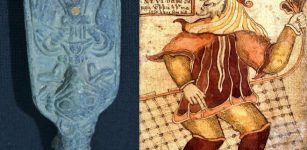 Rare Discovery Of Ancient Artifact Depicting Norse God Loki In Denmark Remains A Mystery
Archaeology | Jan 4, 2017
Rare Discovery Of Ancient Artifact Depicting Norse God Loki In Denmark Remains A Mystery
Archaeology | Jan 4, 2017 -
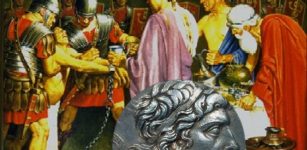 King Mithradates VI Of Pontus Used Poison To Avoid Death By Poison
Ancient History Facts | Mar 5, 2016
King Mithradates VI Of Pontus Used Poison To Avoid Death By Poison
Ancient History Facts | Mar 5, 2016 -
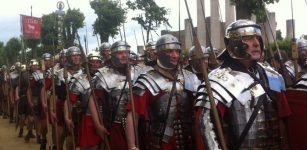 The Word Salary Has Roots In Ancient Rome And History Of Salt
Ancient History Facts | Jun 29, 2016
The Word Salary Has Roots In Ancient Rome And History Of Salt
Ancient History Facts | Jun 29, 2016 -
 Mysterious Ancient Dark Object Hidden In The Colorado Mountains – What Happened To It?
Featured Stories | Jun 17, 2024
Mysterious Ancient Dark Object Hidden In The Colorado Mountains – What Happened To It?
Featured Stories | Jun 17, 2024


